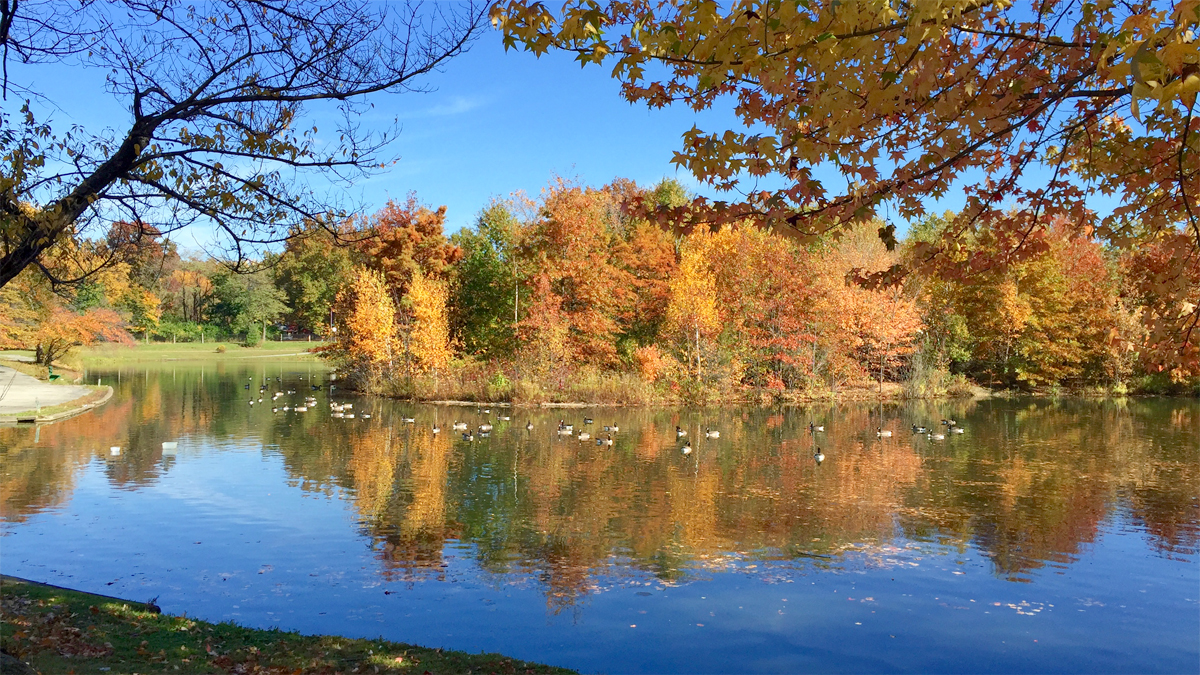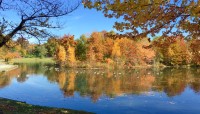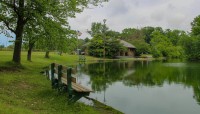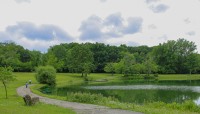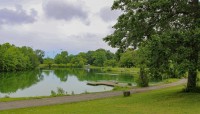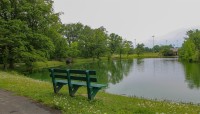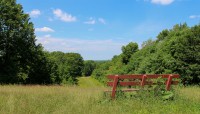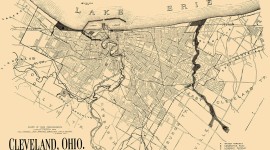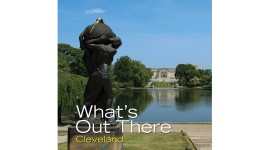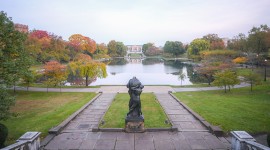Landscape Information
Straddling the boundary between East Cleveland and Cleveland Heights, this 235-acre park is edged primarily by residential neighborhoods and is partitioned by a curvilinear, east-west oriented drive, Forest Hills Boulevard. The park features topographically varied land, including two steep ravines, and incorporates an estate developed by John D. Rockefeller, Sr., from 1880 to 1917. Throughout his tenancy, Rockefeller improved the grounds, laying out a network of carriage drives, paths, and trails; establishing a nine-hole golf course and lake; and constructing bridges, culverts and retaining walls along the Dugway Brook using Euclid bluestone quarried on site. Beginning in 1890, John D. Rockefeller, Jr., assisted with landscape-related projects and in 1923 acquired the property. In 1938 he donated a portion of the estate to East Cleveland and Cleveland Heights, stipulating that the land be used as a recreational park, overseen by a commission comprised of each city’s mayor and a chairperson appointed by the American Society of Landscape Architects (ASLA).
Rockefeller, Jr., engaged landscape architect A.D. Taylor, whose 1938 masterplan was implemented by the Works Progress Administration. Taylor incorporated the existing circulation network and preserved expansive sections of woodlands. He transformed the golf course into a pastoral ‘Great Meadow,’ and established athletic fields north and south of Forest Hills Boulevard. Taylor enlarged the lake to over five acres, siting an open-air stone boathouse (1940) on its northern shore and establishing a naturalistic cascade-like spillway at its outflow. A pedestrian bridge, designed by engineer Wilbur Watson and architect Frank Walker (1940) spans the boulevard, connecting footpaths that navigate throughout the park, following the edges of the ravines, shaded by deciduous trees, such as maple, oak, and beech. The park includes approximately a dozen native specimens that are more than 200 years old, designated by the Cleveland Museum of Natural History in 1946 as ‘Moses Cleaveland Trees' to commemorate the city's sesquicentennial. The park opened to the public in 1942.
Forest Hill Park was listed in the National Register of Historic Places in 1998. The following year an updated master plan was prepared by Pressley Associates.



